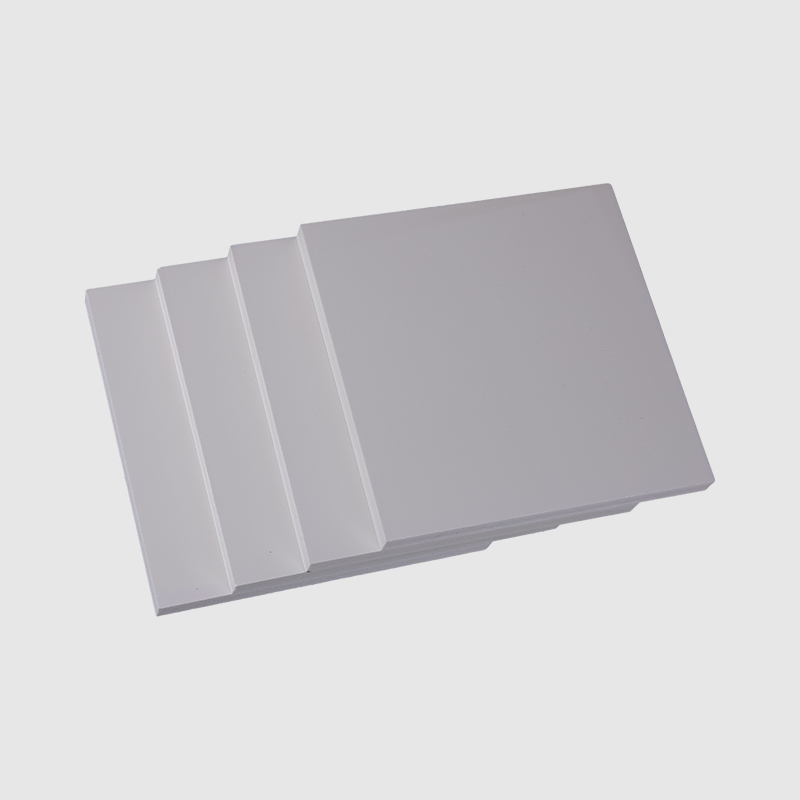Cat:PVC Foam Board
Characteristics: the surface of the board is smooth, bright, neat, no defects, can be used for signboards, banners, shop window decorations, exhibitio...
See DetailsIn the world of signage, displays, and crafts, material choice is paramount. For years, traditional materials have dominated the market, but a growing demand for eco-friendly options has brought a new contender to the forefront: PVC Free Foam Board. This innovative material offers the durability and versatility of its conventional counterparts without the environmental concerns associated with Polyvinyl Chloride. This comprehensive guide will delve into what makes PVC Free Foam Board an excellent choice, exploring its benefits, applications, and how it compares to other materials. Whether you're a seasoned designer or a DIY enthusiast, understanding this sustainable substrate will empower you to make more environmentally conscious decisions for your projects.
PVC Free Foam Board is a rigid, lightweight panel typically composed of a foam core sandwiched between two paper or plastic facings. The key differentiator is the absence of Polyvinyl Chloride (PVC) in its composition. Traditional foam boards often use PVC in the facings or the core, which can release harmful chlorine-based chemicals during production and disposal. PVC Free Foam Board utilizes alternative materials like recycled paper, polypropylene (PP), or polyethylene terephthalate (PET/G), often derived from post-consumer waste like recycled bottles. This makes it a non-toxic and more sustainable option.
Switching to a PVC free alternative offers a multitude of advantages, extending beyond just environmental goodwill. Its material properties make it suitable for a wide range of professional and personal applications.
To truly appreciate its value, it's helpful to compare PVC Free Foam Board directly with other common substrates. The following table highlights key differences in properties and environmental impact, helping you understand why it's a superior eco-friendly foam board choice.
| Material | Core Composition | Recyclability | Water Resistance | Typical Use Cases |
| PVC Free Foam Board | PP, PET, Paper | Widely Recyclable | Good to Excellent | Retail Signage, Exhibitions, Models |
| Traditional PVC Foam Board | PVC | Difficult / Not Recyclable | Excellent | Outdoor Signage, Construction |
| Corrugated Cardboard | Paper Fiber | Highly Recyclable | Poor | Packing, Temporary Displays |
| Gatorboard | Polystyrene | Limited Recyclability | Fair | Photo Mounting, Insulation |

High-density plastic sheets pvc forex board pvc foam board for kitchen cabinet
The versatility of PVC Free Foam Board makes it a go-to material across numerous industries. Its combination of print quality, durability, and ease of use opens up a world of creative and practical possibilities. Understanding its applications of PVC free foam board can spark ideas for your next project.
Selecting the correct thickness is crucial for the structural integrity and intended use of your PVC Free Foam Board. A common question we encounter is about the best thickness for PVC free foam board in different scenarios.
One of its greatest advantages is its workability. Knowing the how to cut PVC free foam board properly is key to achieving professional results. With the right techniques, you can achieve clean, precise edges without damaging the material.
Yes, in most indoor applications, PVC Free Foam Board is just as durable, if not more so in certain aspects. It offers excellent resistance to warping and impact. While traditional PVC board may have a slight edge in long-term outdoor UV and weather resistance, advanced PVC Free Foam Board made from PET or with UV-resistant coatings is closing this gap rapidly, making it a robust eco-friendly foam board for a wide range of uses.
Absolutely. This is one of its primary benefits. Most PVC Free Foam Board products are widely recyclable in polypropylene (PP) or paper streams, depending on their composition. It's crucial to check with your local recycling facility for specific guidelines. This recyclability significantly reduces its environmental footprint compared to traditional PVC foam board, which is notoriously difficult to recycle.
For lightweight items like photos or paper, double-sided tape or spray adhesive works well. For heavier objects, it's recommended to use mechanical fasteners. You can use pins, staples (for the edges), or even create a recess for a more permanent fixture. When using adhesives, ensure they are compatible with non-PVC materials to avoid damaging the board's surface.
Yes, it is a much safer alternative for children's crafts and school projects. Since it contains no chlorine or phthalates (common plasticizers in PVC), it does not release harmful fumes when cut or handled. Its non-toxic nature makes it an excellent choice for a classroom or home environment, aligning with the growing demand for non-toxic material for signage and art supplies.
Initially, PVC Free Foam Board can be slightly more expensive than standard PVC-based foam board due to the cost of alternative raw materials and manufacturing processes. However, the price difference has narrowed significantly as production has scaled up. When you factor in potential disposal fees for PVC waste and the environmental benefits, many users find that PVC Free Foam Board offers excellent long-term value, making the cost of PVC free foam board a worthwhile investment.
Contact Us